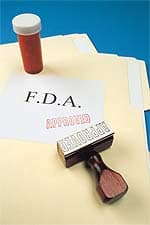Life Extension Magazine®
You might be surprised to know that the leading cause of acute liver failure in the United States is not alcohol abuse, nor viral hepatitis. The number one reason Americans suffer acute liver failure is a drug the FDA has allowed to be sold for decades after its lethal toxicities were known.1 This drug is available over-the-counter and in prescription combinations. In many cases, those ingesting this toxic drug (under various brand names) don’t even know they are taking it. The FDA has bent over backwards to protect billions of dollars of profits earned annually by pharmaceutical companies who sell this deadly drug. As the body count mounted in 2009, the FDA was forced to mandate a lower dosage and remove it from prescription combinations that were particularly lethal.2 The FDA’s feeble actions to appease critics are too little and far too late. The reduced dose will spare some lives, but this toxic drug will still inflict a considerable death toll. The fact that this carnage has gone on for decades confirms the FDA’s blatant failure to protect the public. What Called My Attention to This Drug-Induced Bloodbath?Back in the early 1980s, I was having one of my all-night brain-storming sessions with scientists who routinely think “outside the box” when it comes to medical issues. One of these scientists enlightened me to the mechanism by which the pain reliever acetaminophen causes liver damage. When acetaminophen is ingested, a rapid depletion of glutathione in the liver occurs.3,4 The result of glutathione depletion is free radical destruction of liver cells.5-9 The scientists I spoke with suggested that Life Extension® make a combination product of acetaminophen and N-acetyl cysteine (a glutathione-enhancing amino acid). According to these scientists, this would probably eliminate virtually all acetaminophen-related acute deaths.10-14 Since acetaminophen and N-acetyl cysteine are both sold over-the-counter, you might think that making a “safer” acetaminophen formula would not be difficult. There is one problem. The FDA prohibits combining existing drugs and dietary supplements unless a New Drug Application is filed, tens of millions of dollars of clinical studies are performed, and the FDA agrees to allow the combination to be sold. The whole process can cost upwards of $100 million and take a decade to complete. So by bureaucratic edict, a safer form of acetaminophen never made it to market. FDA Throws Us in Jail!
In the late 1980s, the FDA began raiding our facilities for the purposes of gathering evidence to put me and others in jail. According to the FDA, our products were not approved by the agency and were therefore inherently unsafe. We fought back by showing that not only were the products we recommended safe and effective, but that many of the drugs the FDA claimed to be safe were really poisons! We were indicted in the early 1990s under the charges that our product recommendations violated the FDA’s coveted regulatory structure, which included having approved labeling so consumers and their doctors could safely use these products. My Weekly Radio ShowIn response to those who believed the FDA’s fabricated attacks against us, I set up my own radio show on one of the largest stations in South Florida. Almost every week I would identify a drug the FDA approved as “safe” and reveal just how dangerous it really was. I would then discuss ways to make these drugs safer, such as taking coenzyme Q10 if a statin cholesterol-lowering drug were needed. It was known way back then that statin drugs interfere with CoQ10 synthesis in the body.15 By taking supplemental CoQ10, one could replenish their body with this life-sustaining nutrient that is depleted by statin drugs and aging.
In recalling my conversations with forward-thinking scientists in the early 1980s, I researched acetaminophen and was astounded by the multiple toxic effects this drug inflicts on the liver,16-20 kidney,21-26 and other organs.27-29 When I went to the pharmacy to check out the labeling, there were no warnings required by the FDA to indicate this drug’s lethal side effects. So here I was facing decades in prison for recommending products that did not have FDA-approved labeling, yet the FDA did not require labeling for one of the most dangerous drugs on the market to warn consumers about its lethal effects. These egregious disparities were not lost on prosecutors, who eventually dismissed the FDA’s flawed indictments against us. Just How Dangerous Is Acetaminophen?Each year, acetaminophen poisoning results in 100,000 calls to poison control centers, 56,000 emergency room visits, 26,000 hospitalizations, and more than 450 deaths from liver failure.30 Acetaminophen’s deadly effects extend beyond the liver. Regular users of acetaminophen may double their risk of kidney cancer, a disease that kills 12,000 Americans each year. 25,26,31-33 The incidence of kidney cancer in the US has risen 126% since the 1950s,34 a jump that may be tied to the growing use of drugs containing acetaminophen and its metabolites. Because acetaminophen generates damaging free radicals throughout the body, it may very well increase the risk of many age-related diseases. In fact, scientists can consistently induce cataracts in the eyes of laboratory animals by giving them acetaminophen.35 They consider acetaminophen a “cataratogenic agent.” Interestingly, if antioxidants are provided to the animals, the cataract-inducing effects36-40 of acetaminophen are often completely neutralized.41,42 Just imagine how the FDA would respond if a dietary supplement caused even a few of these adverse reactions. The FDA would immediately shut down the company and probably pursue criminal charges against the owners. Not so with acetaminophen. Since it is “approved” by the FDA, little has been done up till now to restrict consumer access to it. FDA Scientific Advisory Panel Recognizes RisksIn 2009, an outside advisory panel recommended that the FDA ban narcotics containing acetaminophen.43 The panel also recommended that the amount of acetaminophen contained in OTC products be reduced. The FDA’s response to its own Scientific Advisory Panel was to implement some changes to protect Americans against the liver damage inflicted by over-the-counter and prescription acetaminophen drugs.44,45 No mention was made about combining N-acetyl cysteine to protect against glutathione depletion and subsequent free radical-induced liver damage. There was also no mention about the other health problems (like kidney failure and kidney cancer) potentially caused by acetaminophen.
The most popular acetaminophen-containing drug is Tylenol®, and its makers wasted no time in running full page ads proclaiming that Tylenol® remains the “safest” pain relieving drug on the market. There appears to be no limit to how low pharmaceutical companies will sink to protect their immoral profits. To imply that acetaminophen is “safe” is a scientific contradiction. Acetaminophen and the FDA: A Sordid HistoryThe 2009 announcement about acetaminophen’s deadly effects is not the first time an independent group of doctors recommended the FDA do something about this drug. In 2002, another independent advisory committee commissioned by the FDA urged that warnings be put on the labels of acetaminophen drugs.46,47 The FDA said no to its own scientific advisors. Instead, the FDA budgeted a mere twenty thousand dollars29,30 to develop material that it hoped would be run in magazines and distributed by pharmacy chains for free!48 This is the bureaucratic equivalent of doing nothing. By 2004, the FDA capitulated to scientific pressure and mandated a minimal warning be placed on acetaminophen labels, which did nothing to stop the slaughter caused by this deadly drug.49 | ||||||
FDA Should Have Known About Kidney ToxicityThe painkiller drug phenacetin was taken off the market long ago because of its severe kidney toxicity and increased risk of bladder cancer.50-54 Acetaminophen is the major metabolite of this banned drug, meaning that phenacetin’s destructive properties may have been caused by its breakdown to acetaminophen in the body.
So while phenacetin was withdrawn because too many peoples’ kidneys were shutting down, the FDA had no problem letting its major metabolite (acetaminophen) be freely marketed without any consumer warning whatsoever. If acetaminophen is responsible for even a small percentage of the overall annual kidney cancer cases, the FDA’s failure to restrict this one drug may have killed tens of thousands of Americans from this one disease alone! As history has taught us, when a highly profitable drug turns out to be a lethal killer, the FDA’s first response is to safeguard pharmaceutical economic interests. Consumer protection is a secondary issue. It Is “Impossible” for the FDA to Protect the PublicLife Extension® warned about the lethal dangers of acetaminophen-containing drugs almost 20 years ago. The FDA carefully listened to each one of my radio shows hoping to identify new criminal charges they could bring against me, but did nothing to alert the public about acetaminophen’s deadly side effects. Even when national news broadcasts reported on real life victims who died from acetaminophen, the agency responsible for protecting Americans against unsafe drugs stood still. Why was that? As most of you know, pharmaceutical interests exert tremendous control over the FDA. Employees of the FDA are offered lucrative pharmaceutical jobs upon retirement and are heavily lobbied by drug companies while working at the agency. Members of Congress charged with overseeing the FDA are also inundated by pharmaceutical lobbyists and pharmaceutical campaign contributions. When the safety of a drug as popular as acetaminophen is challenged, you can be certain pharmaceutical companies will pull out all the stops to make sure the government does not ban it. Even when the FDA proposes stricter labeling on drugs like acetaminophen, pharmaceutical lobbyists besiege the FDA and Congress to make these warnings so benign that the public largely ignores them. The degree of political influence involved in FDA decision-making results in it being impossible for the agency to use scientific evidence to protect Americans against unsafe drugs. As I described earlier in this article, those not beholden to the pharmaceutical cartel learned of acetaminophen’s lethal effects decades ago—and even came up with preventive antidotes (such as N-acetyl cysteine). Yet to this day, acetaminophen continues to poison huge segments of the American public who still are unaware of how toxic this drug really is. All Pain-Suppressing Medications Are Toxic
To relieve chronic pain, toxic doses of all approved analgesics are often required. That argument has been used by acetaminophen makers to state that if patients have to switch to other FDA-approved drugs (such as ibuprofen or Celebrex®), then users will die from other causes, such as stomach bleeding and heart attacks. We don’t disagree that all FDA-approved pain relievers are dangerous and only minimally effective. We question why conventional doctors liberally prescribe toxic analgesics without seeking to alleviate the underlying cause of the pain. In some cases, chiropractic care can result in functional and symptom relief of chronic pain. Certain dietary supplements such as gamma linolenic acid (from borage oil),55 high-dose fish oil,56,57 MSM (methylsulphonylmethane)58,59 and Korean Angelica extract60,61 have demonstrated remarkable pain relieving effects in peer-reviewed published scientific studies. In 2009, we introduced an Infrared Heating Pad that delivers a steady stream of soothing warmth deep into the tissues. We sold ten times more of these Infrared pads than we expected, and have received remarkable testimonials back from users. The number of these Infrared pads we shipped out indicates how many people suffer from chronic pain. Unfortunately, the FDA decided to ban the importation of this product until the company completes lengthy and burdensome registration requirements, so many of those suffering chronic pain will have no choice but resorting to toxic drugs the FDA allows to be freely sold. We will let you know if and when these infrared heating pads ever become available. Free Market More Effective than FDAFor more than a century, consumers have been misled into believing the FDA protected them against dangerous drugs. The harsh reality is that the FDA functions to protect the economic interests of the pharmaceutical establishment, while trampling on the rights of Americans to access safer and more effective natural therapies. As a reader of the Life Extension Magazine®, you learn about deadly drugs (such as Vioxx® and Premarin®) long before the FDA takes action to warn the public. Our 30-year track record documents that we are far more proficient in warning consumers about dangerous medications than the taxpayer-funded and drug company-corrupted FDA.
For longer life,
William Faloon | ||||
| References | ||||
| 1. Bromer MQ, Black M. Acetaminophen hepatotoxicity. Clin Liver Dis. 2003 May;7(2):351-67. 2. Available at: http://www.time.com/time/health/article/0,8599,1908042,00.html. Accessed July 16, 2009. 3. Wu J, Danielsson A, Zern MA. Toxicity of hepatotoxins: new insights into mechanisms and therapy. Expert Opin Investig Drugs. 1999 May;8(5):585-607. 4. Richie JP Jr, Lang CA, Chen TS. Acetaminophen-induced depletion of glutathione and cysteine in the aging mouse kidney. Biochem Pharmacol. 1992 Jul 7;44(1):129-35. 5. DeLeve LD, Kaplowitz N. Glutathione metabolism and its role in hepatotoxicity. Pharmacol Ther. 1991 Dec;52(3):287-305. 6. Larson AM, Polson J, Fontana RJ, et al. Acetaminophen-induced acute liver failure: results of a United States multicenter, prospective study. Hepatology. 2005; 42(6):1364–72. 7. Uhlig S, Wendel A. Glutathione enhancement in various mouse organs and protection by glutathione isopropyl ester against liver injury. Biochem Pharmacol. 1990 Jun 15;39(12):1877-81. 8. Loguercio C, Del Vecchio Blanco C, Coltorti M, Nardi G. Alteration of erythrocyte glutathione, cysteine and glutathione synthetase in alcoholic and non-alcoholic cirrhosis. Scand J Clin Lab Invest. 1992 May;52(3):207-13. 9. Shigesawa T, Sato C, Marumo F. Significance of plasma glutathione determination in patients with alcoholic and non-alcoholic liver disease. J Gastroenterol Hepatol. 1992 Jan-Feb;7(1):7-11. 10. Atkuri KR, Mantovani JJ, Herzenberg LA, Herzenberg LA. N-Acetylcysteine—a safe antidote for cysteine/glutathione deficiency. Curr Opin Pharmacol. 2007 Aug;7(4):355-9. 11. Millea PJ. N-acetylcysteine: multiple clinical applications. Am Fam Physician. 2009 Aug 1;80(3):265-9. 12. Tsai CL, Chang WT, Weng TI, Fang CC, Walson PD. A patient-tailored N-acetylcysteine protocol for acute acetaminophen intoxication. Clin Ther. 2005 Mar;27(3):336-41. 13. Lauterburg BH, Corcoran GB, Mitchell JR. Mechanism of action of N-acetylcysteine in the protection against the hepatotoxicity of acetaminophen in rats in vivo. J Clin Invest. 1983 Apr;71(4):980-91. 14. Prescott LF, Park J, Ballantyne A, Adriaenssens P, Proudfoot AT. Treatment of paracetamol (acetaminophen) poisoning with N-acetylcysteine. Lancet. 1977 Aug 27;2(8035):432-4. 15. Ghirlanda G, Oradei A, Manto A, et al. Evidence of plasma CoQ10-lowering effect by HMG-CoA reductase inhibitors: a double-blind, placebo-controlled study. J Clin Pharmacol. 1993 Mar;33(3):226-9. 16. Moling O, Cairon E, Rimenti G, Rizza F, Pristerá R, Mian P. Severe hepatotoxicity after therapeutic doses of acetaminophen. Clin Ther. 2006 May;28(5):755-60. 17. Bolesta S, Haber SL. Hepatotoxicity associated with chronic acetaminophen administration in patients without risk factors. Ann Pharmacother. 2002 Feb;36(2):331-3. 18. Chun LJ, Tong MJ, Busuttil RW, Hiatt JR. Acetaminophen hepatotoxicity and acute liver failure. J Clin Gastroenterol. 2009 Apr;43(4):342-9. 19. Lee WM. Acetaminophen and the US Acute liver failure study group: lowering the risks of hepatic failure. Hepatology. 2004 Jul;40(1):6-9. 20. Watkins PB, Kaplowitz N, Slattery JT, et al. Aminotransferase elevations in healthy adults receiving 4 grams of acetaminophen daily: a randomized controlled trial. JAMA. 2006 Jul 5;296(1):87-93. 21. Bonkovsky HL, Kane RE, Jones DP, Galinsky RE, Banner B. Acute hepatic and renal toxicity from low doses of acetaminophen in the absence of alcohol abuse or malnutrition: evidence for increased susceptibility to drug toxicity due to cardiopulmonary and renal insufficiency. Hepatology. 1994 May;19(5):1141-8. 22. Blakely P, McDonald BR. Acute renal failure due to acetaminophen ingestion: a case report and review of the literature. J Am Soc Nephrol. 1995 Jul;6(1):48-53. 23. Zaffanello M, Brugnara M, Angeli S, Cuzzolin L. Acute non-oliguric kidney failure and cholestatic hepatitis induced by ibuprofen and acetaminophen: a case report. Acta Paediatr. 2009 May;98(5):903-5. 24. Björck S, Svalander CT, Aurell M. Acute renal failure after analgesic drugs including paracetamol (acetaminophen). Nephron. 1988; 49(1):45-53. 25. Gago-Dominguez M, Yuan JM, Castelao JE, Ross RK, Yu MC. Regular use of analgesics is a risk factor for renal cell carcinoma. Br J Cancer. 1999 Oct;81(3):542-8. 26. McLaughlin JK, Blot WJ, Mehl ES, Fraumeni JF Jr. Relation of analgesic use to renal cancer: population-based findings. Natl Cancer Inst Monogr. 1985 Dec;69:217-22. 27. Derby LE, Jick H. Acetaminophen and renal and bladder cancer. Epidemiology. 1996 Jul;7(4):358-62. 28. Kaye JA, Myers MW, Jick H. Acetaminophen and the risk of renal and bladder cancer in the general practice research database. Epidemiology. 2001 Nov;12(6):690-4. 29. Price LM, Poklis A, Johnson DE. Fatal acetaminophen poisoning with evidence of subendocardial necrosis of the heart. J Forensic Sci. 1991 May;36(3):930-5. 30. Nourjah P, Ahmad SR, Karwoski C, Willy M. Estimates of acetaminophen (Paracetamol)-associated overdoses in the United States. Pharmacoepidemiol Drug Saf. 2006 Jun;15(6):398-405. 31. Available at: http://www.kidney-cancer- symptoms.com. Accessed April 14, 2010. 32. Derby LE, Jick H. Acetaminophen and renal and bladder cancer. Epidemiology. 1996 Jul;7(4):358-62. 33. Kaye JA, Myers MW, Jick H. Acetaminophen and the risk of renal and bladder cancer in the general practice research database. Epidemiology. 2001 Nov;12(6):690-4. 34. Pantuck AJ, Zisman A, Belldegrun AS. The changing natural history of renal cell carcinoma. J Urol. 2001 Nov;166(5):1611-23. 35. Qian W, Shichi H. Acetaminophen produces cataract in DBA2 mice by Ah receptor-independent induction of CYP1A2. J Ocul Pharmacol Ther. 2000 Aug;16(4):337-44. 36. Available at: http://www.nlm.nih.gov/medlineplus/ency/article/002598.htm. Accessed July 30, 2009. 37. Garcia Rodríguez LA, Hernández-Díaz S. The risk of upper gastrointestinal complications associated with nonsteroidal anti-inflammatory drugs, glucocorticoids, acetaminophen, and combinations of these agents. Arthritis Res. 2001; 3(2):98-101. 38. Beasley R, Clayton T, Crane J, et al. Association between paracetamol use in infancy and childhood, and risk of asthma, rhinoconjunctivitis, and eczema in children aged 6-7 years: analysis from Phase Three of the ISAAC programme. Lancet. 2008 Sep 20;372(9643):1039-48. 39. Lawyer AB. Paracetamol as a risk factor for allergic disorders. Lancet. 2009 Jan 10;373(9658):121. 40. Forman JP, Stampfer MJ, Curhan GC. Non-narcotic analgesic dose and risk of incident hypertension in US women. Hypertension. 2005 Sep;46(3):500-7. 41. Rathbun WB, Killen CE, Holleschau AM, Nagasawa HT. Maintenance of hepatic glutathione homeostasis and prevention of acetaminophen-induced cataract in mice by L-cysteine prodrugs. Biochem Pharmacol. 1996 May 3;51(9):1111-6. 42. Zhao C, Shichi H. Prevention of acetaminophen-induced cataract by a combination of diallyl disulfide and N-acetylcysteine. J Ocul Pharmacol Ther. 1998 Aug;14(4):345-55. 43. Available at: http://www.cnn.com/2009/HEALTH/06/30/acetaminophen.fda.hearing/. Accessed July 20, 2009. 44. Available at: http://www.fda.gov/NewsEvents/Newsroom/PressAnnouncements/ucm149573.htm. Accessed July 20, 2009. 45. Available at: http://abcnews.go.com/Health/PainManagement/Story?id=7965902&page=1. Accessed July 20, 2009. 46. Available at: http://www.drugs.com/news/acetaminophen-hazardous-hepatitis-1807.html. Accessed July 20, 2009. 47. Available at: http://www.fda.gov/ohrms/dockets/ac/02/transcripts/3882T1.htm. Accessed July 20, 2009. 48. Available at: http://www.msnbc.msn.com/id/4031091. Accessed July 27, 2009. 49. Available at: http://www.fda.gov/downloads/Drugs/DrugSafety/InformationbyDrugClass/UCM171901.pd. Accessed July 27, 2009. 50. Piper JM, Tonascia J, Matanoski GM. Heavy phenacetin use and bladder cancer in women aged 20 to 49 years. N Engl J Med. 1985 Aug;313(5):292-5. 51. Unet MS, ChowWH, McLaughiin K, et al. Analgesics and cancers of the renal pelvis and ureter. Int J Cancer. 1995 Jul 4;62(11):15-8. 52. McCredie M, Stewart H, Day NE. Different roles for phenacetin and paracetamol in cancer of the kidney and renal pelvis. Int J Cancer. 1993 Jan 21;(5312):245-9. 53. Brunner FR, Selwood NH. End-stage renal failure due to analgesic nephropathy. Its changing pattern and cardiovascular mortality. Nephrol Dial Transplant. 1994; 9(10):1371-6. 54. Stewart JH, Hobbs JB, McCredie MB. Morphologic evidence that analgesic-induced kidney pathology contributes to the progression of tumors of the renal pelvis. Cancer. 1999 Oct 15;86(8):1576-82. 55. Leventhal LJ, Boyce EG, Zurier RB. Treatment of rheumatoid arthritis with gammalinolenic acid. Ann Intern Med. 1993 Nov 1;119(9):867-73. 56. Fortin PR, Lew RA, Liang MH, et al. Validation of a meta-analysis: the effects of fish oil in rheumatoid arthritis. J Clin Epidemiol. 1995 Nov;48(11):1379-90. 57. Kremer JM, Lawrence DA, Petrillo GF, et al. Effects of high-dose fish oil on rheumatoid arthritis after stopping nonsteroidal antiinflammatory drugs. Clinical and immune correlates. Arthritis Rheum. 1995 Aug;38(8):1107-14. 58. Kim LS, Axelrod LJ, Howard P, Buratovich N, Waters RF. Efficacy of methylsulfonylmethane (MSM) in osteoarthritis pain of the knee: a pilot clinical trial. Osteoarthritis Cartilage. 2006 Mar;14(3):286-94. 59. Usha PR, Naidu MU. Randomised, Double-Blind, Parallel, Placebo-Controlled Study of Oral Glucosamine, Methylsulfonylmethane and their Combination in Osteoarthritis. Clin Drug Investig. 2004; 24(6):353-63. 60. Choi SS, Han KJ, Lee JK, et al. Antinociceptive mechanisms of orally administered decursinol in the mouse. Life Sci. 2003 Jun 13;73(4):471-85. 61. Choi SS, Han KJ, Lee HK, Han EJ, Suh HW. Antinociceptive profiles of crude extract from roots of Angelica gigas NAKAI in various pain models. Biol Pharm Bull. 2003 Sep;26(9):1283-8. |







